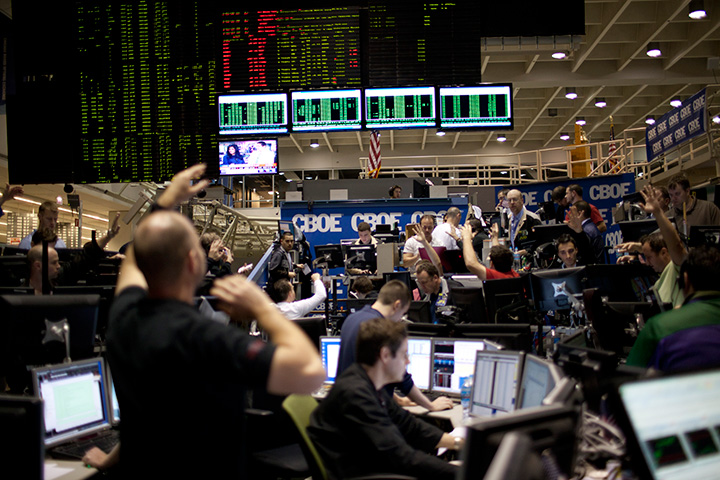

In the late 1800s, cattle would be shipped alive to the Chicago Livestock Market. The development of the livestock industry, of course, is the stuff of legends hundreds of "Western" movies were made about the cattle drives from Texas up the railheads in Nebraska and Kansas. They could escape the manure but not the smell. Buyers and sellers could survey the herds from the comfort and safety of elevated walkways eight to 10 feet above the pens.

There was also an internal railroad system owned by the stockyard itself. In addition to trucks, the stockyard was serviced by at least six railroads the Union Pacific Chicago, Burlington & Quincy Missouri Pacific Chicago, Rock Island & Pacific Chicago & North Western and the Wabash.Stockmen would have to serve as traffic cops to keep the trucks moving, and still it would take hours to unload. Some market days, the livestock trucks would be lined up from 36th and L Streets all the way west to 72nd Street.On any given market day in the mid-50s, over $2.5 million dollars worth of livestock was handled almost $18 million worth in today's dollars.Throughout the 50s, Omaha attracted livestock from around 30 states and Canada.In 1958, there was more than a million bushels of government grain stored at the stockyards to feed the livestock as they awaited sale.At its height, the stockyard itself employed 300 to 400 people with crews running 24/7.By 1957, the livestock industry that included the stockyard company, an astounding 19 different meatpacking companies, 40 commission firms, a special railroad just for livestock, and other companies employed half of Omaha's workforce.When Omaha took over as the number one livestock market, there were 6.7 million head processed.

M.E.A.T. CHICAGO MARKET DAYS HOW TO
Learn more about how to maximize your Link funds with Green City Market.The Rise and Fall of the Omaha Stockyards When you spend $25 of Link with Green City Market, you automatically get $50 more to spend to make your benefits go further. We're dedicated to expanding access to nutritious, local, sustainably-produced food - that's why we welcome and triple match Link (also known as SNAP or EBT) up to $25. LINK MATCHINGĭid you know Green City Market welcomes and triple matches Link (also known as SNAP or EBT) at all our farmers' markets? Parking validation cards are available at all entrances to the market. Parkingĭiscounted parking is available for $13 for two hours with validation in the Chicago Historical Museum parking lot off of Stockton Drive. The nearest CTA train stops are the Sedgwick brown line and the Clark/Division red line. The following CTA bus routes stop directly in front of Green City Market: 22 Clark, 36 Broadway, 73 Armitage, 151 Sheridan. Discover the best of the Midwest at Green City Market's Lincoln Park farmers' market, with dozens of local, sustainable farmers and food producers, community programs for all ages, and more, April through October.


 0 kommentar(er)
0 kommentar(er)
